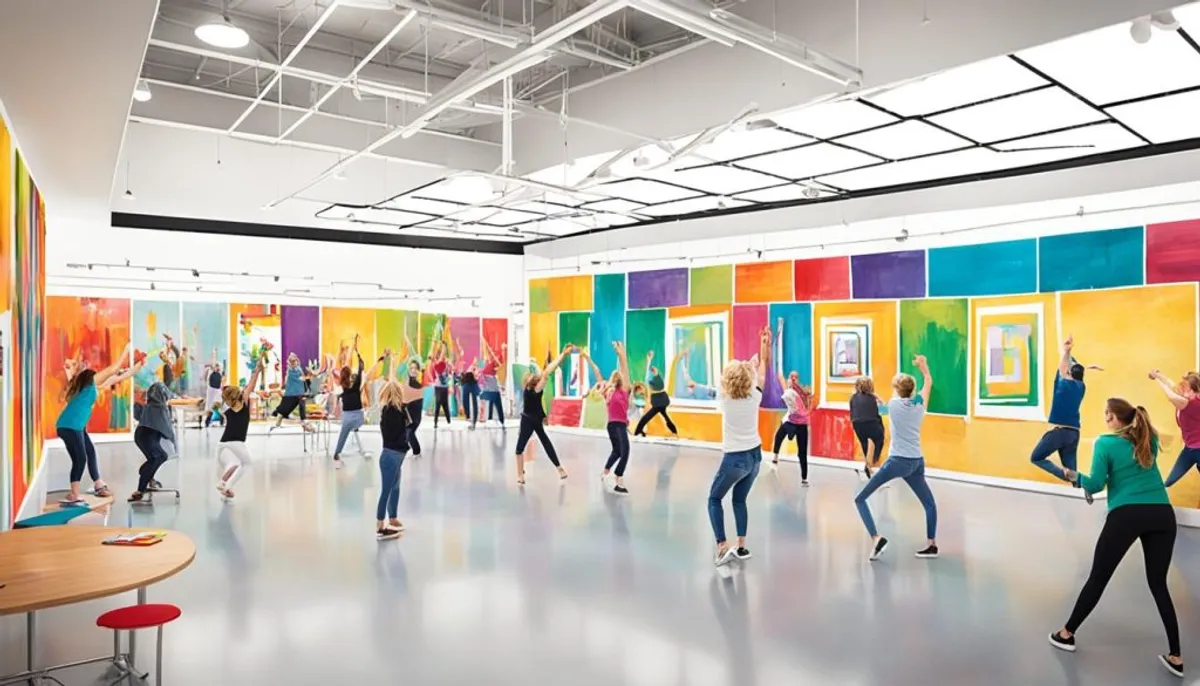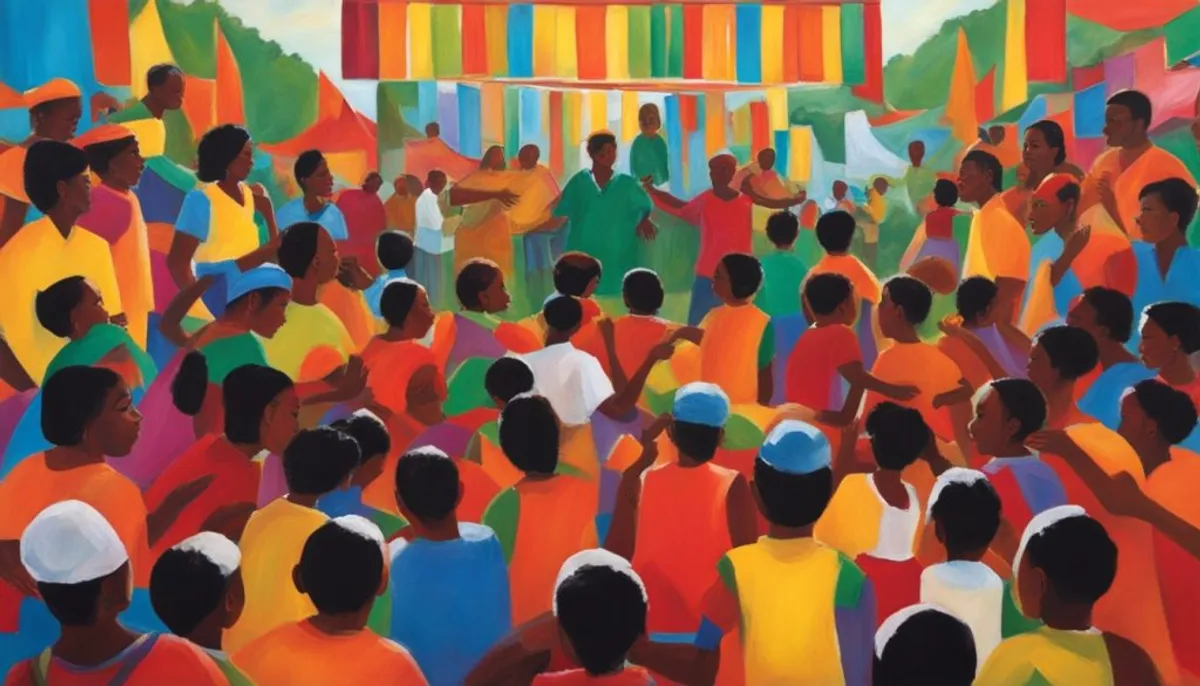Cultural centers are essential for discovering and experiencing culture. They provide a space for the dissemination and creation of art. They are also a place for meeting and cultural exchange.
Cultural centers are at the heart of local cultural life. They play a key role in the democratization of culture. They contribute to cultural democracy.

If you want to know how a cultural center works, this article is for you. It explains the missions and activities of these cultural places.
What is a cultural center?
Cultural centers are important cultural institutions for local life. They are places for meeting and cultural exchange. They provide a space for dissemination and artistic creation.
A place for meeting and cultural exchange
Cultural centers are cultural institutions that anchor their activity in their community. They offer a variety of activities for everyone. They encourage exchanges, discovery, and active participation from citizens.
Becoming places of mobilization and cultural action, they play a key role.
A space dedicated to dissemination and artistic creation
Cultural centers are also spaces for artistic creation. They offer a varied program, including performances, workshops, exhibitions, and lectures. They are showcases of creation and contribute to the democratization of culture.
| Type of activity | Examples |
|---|---|
| Performances and concerts | Theater, music, dance |
| Workshops and internships | Visual arts, writing, photography |
| Exhibitions and lectures | Visual arts, sciences, history |
The main missions of a cultural center
Cultural centers are crucial for sharing the missions of cultural centers and making culture accessible to all, including access to culture. Their main goal is to promote the democratization of culture and to foster a cultural democracy.
The democratization of culture
The democratization of culture ensures that more people can access culture. Cultural centers offer a variety of quality programs. This allows for a genuine cultural and artistic discovery for everyone.
Cultural democracy
Cultural democracy encourages citizen participation in cultural programming. Cultural centers listen to artists, associations, and residents. They involve them in defining the missions of cultural centers.
By working on these two points, cultural centers are essential. They transmit knowledge, encourage cultural and artistic discovery. And they promote collective reflection on cultural democracy.

What is a cultural center?
A cultural center is more than just a building. It is a place for meeting and exchange. It is open to all and encourages citizen participation. It ensures the sharing of cultural practices and access to culture.
The definition of a cultural center includes several key points:
- It is a place for democratization of culture, open to all
- It is a space for dissemination and artistic creation
- It promotes cultural meetings and exchanges among people
- It works for cultural democracy, involving the residents
In summary, a cultural center is a cultural animation hub. It serves the local community.
| Characteristics of a cultural center | Description |
|---|---|
| Democratization of culture | Promote access to culture for all |
| Dissemination and artistic creation | Offer activities for dissemination and artistic creation |
| Cultural meeting and exchange | Provide a space for meeting and exchange among citizens |
| Cultural democracy | Actively involve residents in cultural life |
Activities offered by cultural centers
Cultural centers are full of life. They offer many activities to enrich and develop all audiences. You can find performances, concerts, workshops, internships, exhibitions, and lectures there.
Performances and concerts
Cultural centers organize numerous performances and concerts. They range from theater to dance, including music. It’s an opportunity to discover new talents or rediscover classics.
Workshops and internships
Cultural centers also offer workshops and internships to learn and improve. You can find courses in visual arts, writing, music, or theater. It’s perfect for beginners or those looking to refine their skills in areas they are passionate about.
Exhibitions and lectures
Cultural centers also host temporary exhibitions. They highlight local or international artists. Thematic lectures help to better understand culture. These events enrich the community intellectually and artistically, while providing a synthesis of documents that facilitates access to information.
Thanks to their varied programming, cultural centers make culture accessible to everyone. They promote openness and sharing.

The network of cultural centers in the Wallonia-Brussels Federation
The Wallonia-Brussels Federation has a large network of 119 accredited cultural centers. They are everywhere, in the Brussels region and the 5 Walloon provinces. These centers receive support from the Federation, provinces, and municipalities. They are very creative, dynamic, and constantly reinventing themselves.
Their geographical distribution shows their important role in culture. They are in major cities and also in rural areas. Thus, they reach all citizens with their culture.
| Province | Number of cultural centers |
|---|---|
| Brussels Region | 28 |
| Hainaut | 25 |
| Liège | 23 |
| Namur | 17 |
| Brabant Wallon | 14 |
| Luxembourg | 12 |
This network of cultural centers is crucial for culture. It helps to make culture accessible to all. They are places for meeting and cultural sharing for communities.
Conclusion
Cultural centers are very important for local life. They are places where people meet, exchange, and create. They are open to all and help to make culture accessible to everyone.
Their varied programming and ability to adapt make them essential. They create social bonds, transmit knowledge, and allow everyone to express themselves. Their role is crucial for the cultural life of all.
In short, cultural centers are key to the dissemination and creation of art. They play a major role in the democratization of culture. Their presence enriches the lives of citizens and strengthens the cultural vitality of our communities.
RelatedRelated articles


